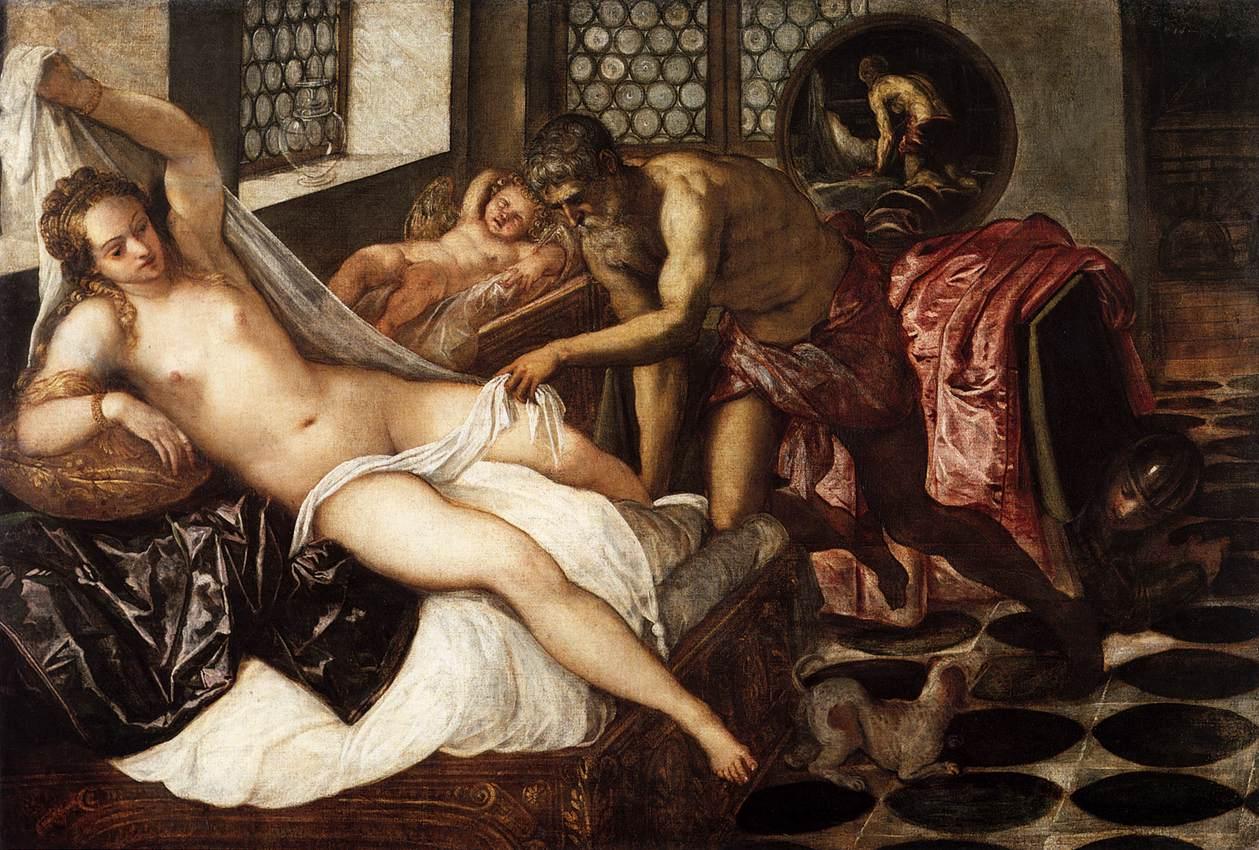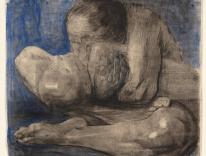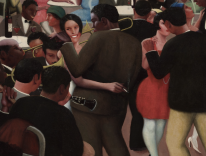Jacopo Tintoretto (1518–1594) has been considered by many, including John Ruskin and Henry James, to be the greatest artist of the Italian Renaissance. I’m embarrassed to confess that I was only vaguely familiar with his work until I had an opportunity to take in the current exhibit at the National Gallery in Washington, D.C., marking the five-hundredth anniversary of his birth. “Tintoretto: Artist of Renaissance Venice” is the first full-scale retrospective of the painter’s work in the United States, and includes forty-six paintings as well as ten drawings, many of which are on view for the first time in this country. It is on view until July 7, and well worth a pilgrimage.
Tintoretto’s vigorous and dramatic style has been compared to that of a filmmaker, and I was astonished by the sense of movement conveyed by many of his paintings. He was among the first to paint with oils on canvas, and his brushwork is often described as robust, even hurried. Things certainly move. In his narrative scenes, bodies are palpably in motion, and the human interactions—even in his religious paintings— are often as playful as they are portentous. You can’t help but be drawn into the action.
The Deposition of Christ (1562), showing Jesus taken down from the cross and placed in his mother’s lap, is one of the largest and most powerful paintings in the exhibit. The skin tones, musculature, and facial features of the figures are remarkably expressive, giving each character in the tableau a distinct personality. Evidently, Tintoretto drew his figures first as nudes before painting their clothing. The potency of bodies is unignorable. In The Deposition of Christ Mary has collapsed, presumably having fainted, her head held by a female companion. Her ashen face has a sculptural look to it. Jesus’ nearly naked body is almost brawny, yet inert in death. He is being held up by a broad-shouldered man while another woman stands over him looking aghast, her arms flung out in dismay or disbelief. The pathos and drama of the scene, the vibrant reds and blues, the play of light and darkness—Jesus’ face is mostly in shadow—all combine to create a raw emotional effect. It was Tintoretto’s ambition to draw like Michelangelo and use color like his former mentor and frequent rival Titian. He certainly pulls that off in The Deposition of Christ.

Venus and Mars Surprised by Vulcan (1545–46) is great fun. A muscular, grey-bearded Vulcan leans over a naked Venus, inspecting her unfaithful thighs. A helmeted Mars hides under a nearby table, peeking out at his lover and her jealous husband. At the foot of the bed a small dog appears bent on exposing Mars’s presence, while in the background a baby lies alert but unattended in a cradle. Venus’s shamelessly beautiful body draws our eye across the canvas, much of which is occupied by innocently domestic details.
A man of humble beginnings, Tintoretto was known for his earthy personality as well as his piety. He often depicted the lives of the poor as well as the ordinary objects of everyday life. In The Last Supper (1563–64) his attention to the social dimensions of even momentous biblical events is on full display. The painting depicts an almost raucous occasion. The disciples receive Jesus’ revelation that one of them would soon betray him with wild consternation. Several of them lean toward him incredulously; others turn toward one another in stark disbelief. One understandably reaches for a bottle of wine, while another throws his head back and his hands in the air, as if to proclaim the impossibility of such a betrayal. These are ordinary men gathered in a familiar and modest setting. Meanwhile, Judas is seated next to Jesus, his head bowed, trying to hide in plain view. Even in the midst of high theological drama, the action here is lively. The painter emphasizes the ordinary humanity of each figure.
The National Gallery exhibit also features a room of Tintoretto’s portraits, including two self-portraits. The first is of the artist as young man. He has a straggly beard, heavy moustache, and a somewhat disheveled appearance. His head is turned toward the viewer, and his gaze is both penetrating and confident. At the end of the exhibit is a self-portrait done in 1588, just a few years before Tintoretto’s death. As in the earlier portrait, the backdrop is dark, and viewer’s eye is drawn immediately to his now wearier but still intense gaze. His hair is grey, his face wrinkled, his long beard now mostly white, but he faces the viewer directly, as if to offer testimony. But Tintoretto himself is a remarkable presence in all his paintings, not only the self-portraits. Every face reflects his special quality of attention and the depth of his own humanity. I must have seen some of his paintings when I visited Venice many years ago, where most of his work remains, being too delicate or too large to travel. Venice, of course, can be overwhelming. It is time to go back and see the artist again in his natural habitat.
Please email comments to [email protected] and join the conversation on our Facebook page.
Previous Story
Farther than Ever from Common Ground?
Next Story
Baptized in the Charles


